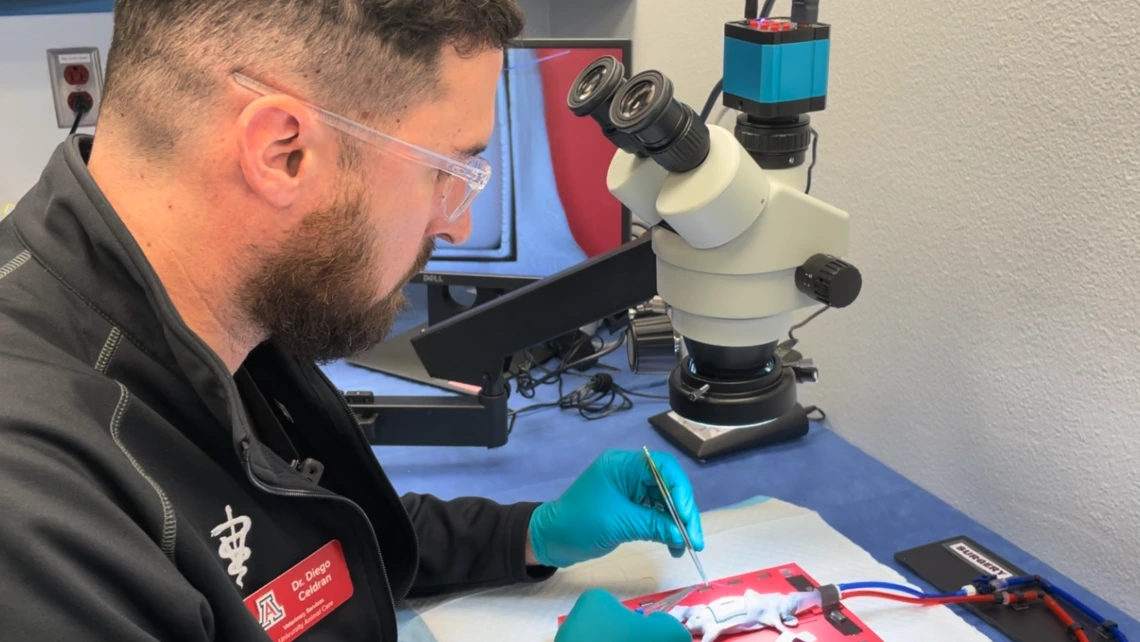Video Tech Tuesday: Veterinary surgery simulator teaches essential skills while reducing the use of animals

Diego Celdrán-Bonafonte demonstrates the veterinary surgery simulator he developed.
Tech Launch Arizona
University of Arizona veterinarian and researcher Diego Celdrán-Bonafonte has developed an animal-free surgical training simulator for use in biomedical research (see UA23-229 on the TLA Inventions website). The simulator allows new research surgery trainees to avoid the use of live animals or cadavers in the early stages of basic surgical training.
At University Animal Care, Dr. Celdrán-Bonafonte trains research personnel in surgical techniques. He also serves as Professor of Practice in the College of Veterinary Medicine and Assistant Research Professor of Surgery in the College of Medicine - Tucson. “Every student or research professional that is going to be involved in any surgical procedures on research animals has to come through our training lab,” he said.
Celdrán-Bonafonte views the problem with training veterinary and research personnel on cadavers or live animals as two-fold. First, experimental surgery carries a steep learning curve. New trainees often lack any hands-on experience with performing surgery on small animals prior to training. “We really have to start from zero,” he said. “And they don't feel good about having to learn the basics on a real animal.”
The second problem with using live animals or cadavers to teach foundational surgical skills is the ethical cost. “What motivated me was to try to maintain the quality of the training, have a high standard, but avoid using animals,” Celdrán-Bonafonte said. “I wanted to get something highly realistic that would recreate better what they're going to have to face when they're actually in front of the real animal.”
His solution addresses both problems. By using the simulation along with the supporting step-by-step training videos he has developed, new trainees can learn, practice and develop their basic surgical skills in a lower-stakes, stress-free environment. They are not attempting to perform their first surgeries on cadavers or live rodents, and they get to practice and master their skills on a non-living object that accurately simulates the anatomy of a real animal.
Celdrán-Bonafonte describes his approach as being guided by what are known as the “three Rs” of animal research: reduce, replace and refine. “By using the simulator, we're replacing the use of cadavers and animals,” Celdrán said. “We're reducing the overall number of animals needed. And developing the surgical knowledge of our students allows them to refine the techniques they're doing. They're going to be better the first time they have to face a live animal.”
Celdrán-Bonafonte, who earned an MBA from the Eller College of Management in 2020, is seeking a business partner to spin the innovation up into a startup, and envisions his surgical simulators as a product line. “I think there’s a lot of market opportunities,” he said. “But I need someone to help me with the business side of things.”

